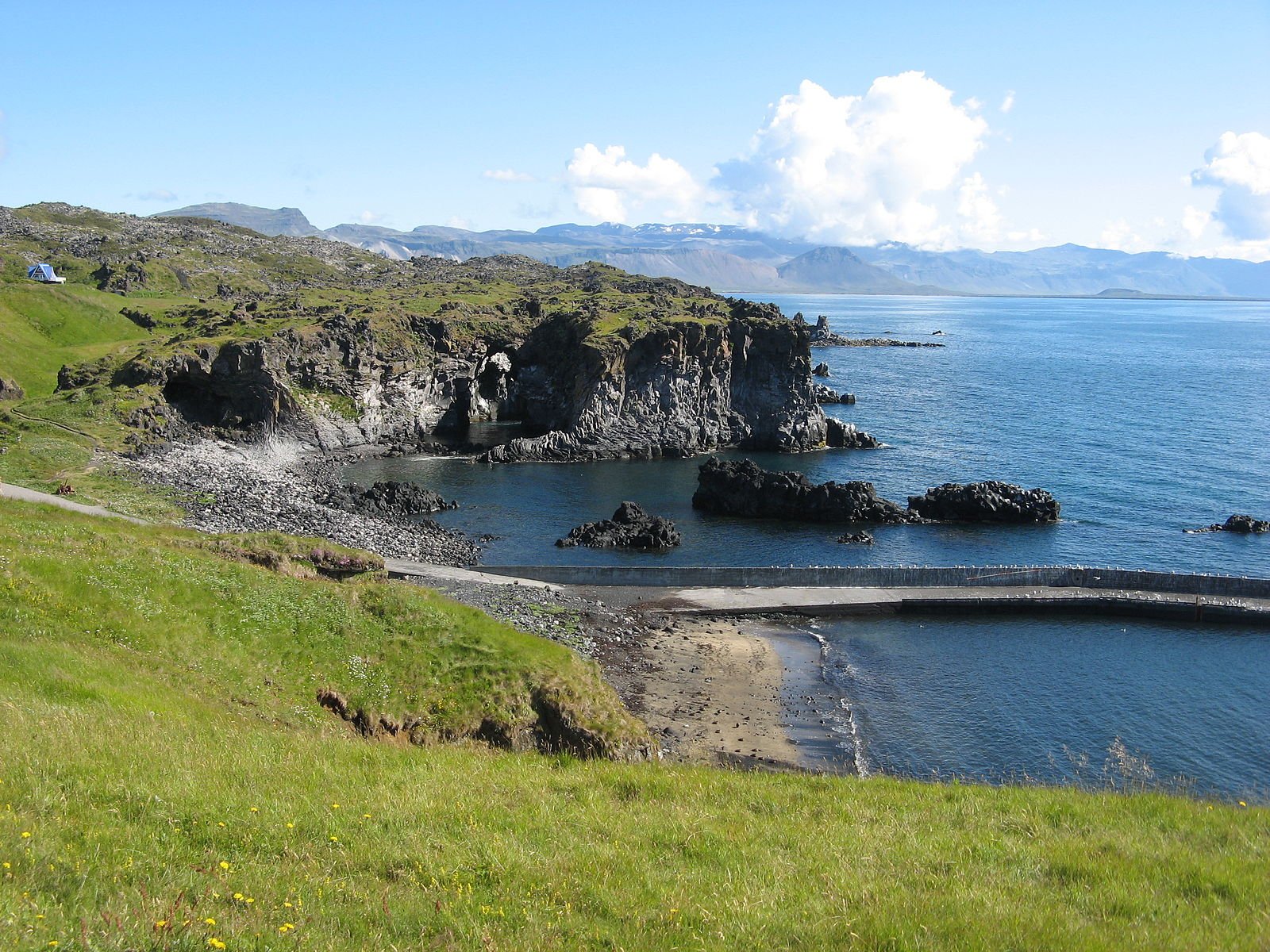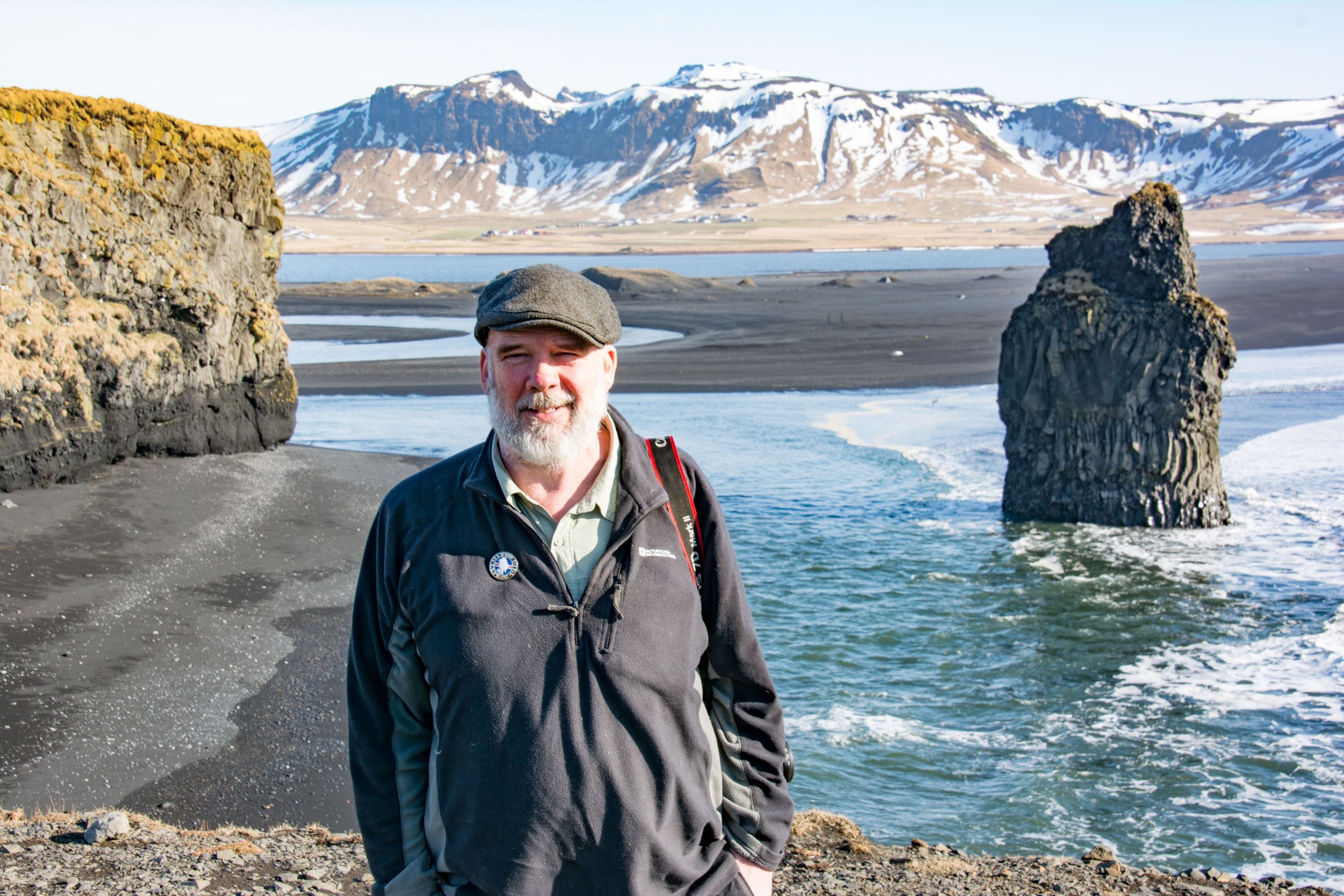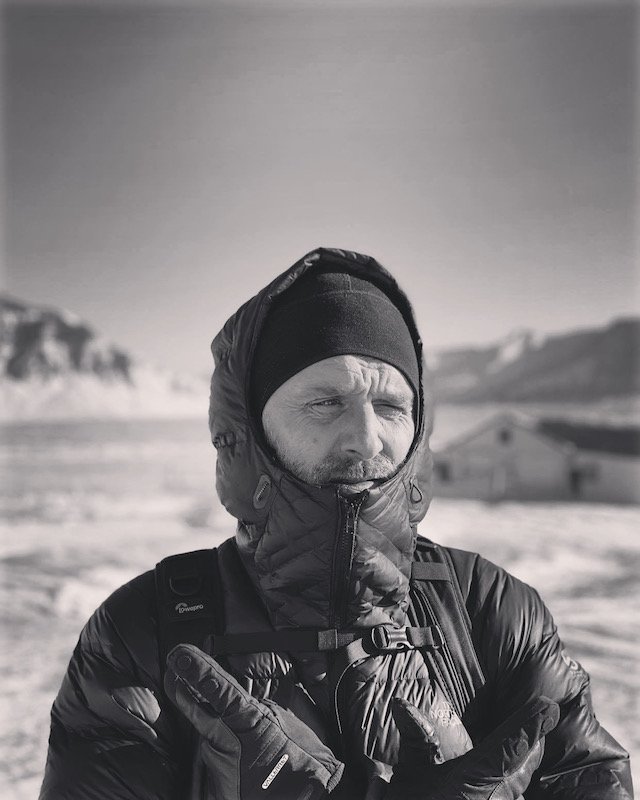East Iceland Travel Guide - Off the Beaten Path
East Iceland is by far one of the country’s most overlooked regions. For many, it’s barely more than a blip on the radar as they shoot around the ring road, tempted by Lake Mývatn in the north, or south Iceland’s bucket-list waterfalls and glaciers. But linger here a while and you’ll find that just like the rest of Iceland, the east is a region that rewards those who take their time.
The mountains in East Iceland are the tallest in the country, their jagged spines soaring above fjords etched into the coast. Deep valleys climb inland, hiding away even more rugged landscapes, eventually leading up to a sandy plateau on the eastern fringes of the glacier, Vatnajökull.
The ring road careens around the fjords, flicking through several small but lively fishing towns, before heading over the mountains to arrive at Egilsstaðir, the capital of East Iceland.
This region was the first part of Iceland the Vikings saw as they arrived from Norway over a thousand years ago. They were struck by how beautiful and empty it all was; not much has changed since.
Read on for everything you need to know to enjoy the best of East Iceland.
More Iceland travel info:
If you could use some one-on-one help planning your itinerary, schedule an Iceland travel consultation with one of our Local Experts!
Table of Contents
Why visit
How long to spend
Best time to visit
How to get around
Where to stay
What to see & do
4-day itinerary


Why visit
Stunning summer scenery in eastern Iceland. Photo: Someone35, CC BY-SA 3.0, via Wikimedia Commons
East Iceland is one of the country’s least-visited regions, but not because it lacks for great scenery or wonderful things to do. Rather, it’s just sort of remote, meaning that those coming on short trips focused on Southern Iceland never make it here, and even those doing the Ring Road just tend to pass through, typically spending just a day or two.
Rather than deter you from visiting, this relative lack of tourism should make you all the more excited to come!
If you’re looking for stunning scenery, wild nature, and remote and empty places, East Iceland is perfect for you. Massive fjords cut in along the coast, the country’s tallest mountains provide amazing backdrops (and huge glaciers), near-empty hiking trails criss cross windswept valleys, and pleasant little fishing villages dot the coast.
And the fact that the region has not yet been “commoditized” for mass tourism means that the whole place retains a more local and natural feel. And gloriously few crowds!
How long to spend
Like many regions in Iceland, you could spend months exploring every valley, fjord, and mountaintop here. But, given you probably don’t have months to spend here, around 4 days is enough time to get a good introduction to East Iceland.
With this amount of time, you could spend one day around Höfn and the glacier, joining a glacier hike or an ice cave tour in the winter. Then, another day spent driving through the East Fjords, stopping off at the traditional villages along the way.
Day 3 could be spent around Egilsstaðir, driving down around the Lagarfljót Lake, venturing into the Highlands, and soaking in the Vök Baths.
Finally, day four could be dedicated to hiking in Borgarfjörður Eystri, home to the most spectacular trails in the region, delivering you into ancient glacial valleys and uninhabited fjords.
*For more info, I’ve included a detailed 4-day itinerary at the bottom of the article.
Best time to visit
Locals in Reykjavik like to complain that East Iceland gets all the good weather, and it’s true. When the good weather arrives in Iceland, it’s likely going to be in East Iceland. On some days, temperatures can reach around 70 degrees – wildly warm for Iceland.
And thanks to the fjords, the region is often protected from the nasty weather that touches down across the rest of Iceland.
So, when is the best time to visit East Iceland? We still recommend coming here in the shoulder seasons, either April and May or September and October. This will help you avoid the big crowds, save you money on accommodation, and give you a small chance to see the northern lights dancing above.
Plus, at either end of the summer, there’s still more than enough daylight hours for exploring.
How to get around
As previously mentioned, it is possible to catch local buses between the towns in East Iceland, but this way of traveling doesn’t let you stop off at the natural sights between the towns.
Having your own car is far better, giving you the freedom to drive to trailheads, waterfalls, and through remote valleys where you can hop out and trot off into the wilderness or climb mountains.
If you won’t have a car, another way to travel around East Iceland is to choose one or two bases and then join organized group tours from there.
By car
The East of Iceland is pleasantly far away from Reykjavik – the capital is a distant memory in these parts. To get to East Iceland with a car, it takes about 6 hours from Reykjavik to Höfn, the harbor town in the southeast corner of Iceland.
From here, the ring road dips in and out of the fjords as it makes its way to Egilsstaðir, which lies another 3 hours and 20 minutes from Höfn. Drive the ring road clockwise from Reykjavik and you’ll get to Egilsstaðir slightly faster in around 8 hours.
Flights
If you’ve already been to Reykjavik and Southern Iceland, you can skip the long drive to East Iceland and instead take a short domestic flight.
The town of Egilsstaðir is home to the busiest airport in the eastern region, and you have daily direct flights to/from Reykjavik with Iceland Air.
You can also catch a direct flight from Reykjavik to Höfn in the southeast with Eagle Air (www.eagleair.is).
You have car rental agencies in both cities, so can pick up a rental in either of them.
By bus
Traveling by bus in Iceland offers a tough lesson on logistics at the best of times, but it is possible to do with some careful planning (and a flexible schedule).
From Reykjavik, direct buses connect to Akureyri, and then to Egilsstaðir. From here, local lines connect from Egilsstaðir to towns in the East Fjords; you can find routes, information, and the cost of tickets on the Strætó website.
Another option is to catch a bus from Reykjavik to Höfn. From here, you’ll be jumping on the local buses again to make your way to the towns strung along the East Fjords.
In both cases, you’ll need to stay overnight in either Akureyri or Höfn before catching your connecting bus.
By Ferry
Finally, there’s a fourth option for getting to East Iceland: the ferry from Denmark. Once a week it arrives at Seyðisfjörður, a town set at the base of one of Iceland’s most spectacular fjords. The ferry takes a couple of days, departing from Hirtshals in Denmark and stopping off in Tórshavn, capital of the Faroe Islands.
Where to stay - best bases
There are two towns that function as good bases from which to explore the greater region: Egilsstaðir and Höfn.
Both towns have all the basic amenities that you need, including hotels, grocery stores, restaurants, gas stations, car rental agencies, bus stations, tour operators, etc. They aren’t particularly interesting places to visit in their own right, but they’re convenient and well located for sightseeing.
Egilsstaðir
The town of Egilsstaðir. Photo: Chris 73 / Wikimedia Commons
The first is Egilsstaðir, the capital of the region. Here you have everything you need for a prolonged stay in the region, and easy access to both the East Fjords as well as the more remote towns further north along the coast.
In town, there are restaurants, cafés, supermarkets, and plenty of different hotels, guesthouses, and a campsite to stay at. It’s also a hub for tours, which makes it easy to suddenly find yourself bumping into the Highlands in a 4x4 or to one of the nearby natural sights. It’s also a hub for public transport, with buses heading in either direction along the ring road and the main airport for the region.
A highlight of staying in Egilsstaðir is being able to visit the Vök Baths, a luxurious hot spring set over a lake just north of town. Another is easy access to Seyðisfjörður, one of the prettiest towns in the country just over the mountains, or the Hallormsstaðaskógur National Forest on the shores of the Lagarfljót Lake.
Höfn
Höfn Harbor. Photo: Maryam Laura Moazedi, www.moazedi.org, CC BY-SA 3.0, via Wikimedia Commons
In the southeastern corner of Iceland is another great spot to base yourself if you’re more interested in glacier activities. Höfn is home to several offices for tour companies who run excursions onto the ice, making it a breeze to join glacier hikes, snowmobile tours, or in the winter, ice cave tours.
There are also plenty of restaurants and hotels in Höfn, and a lot of guesthouses in the countryside surrounding the town. Höfn is also famous for its lobster, so restaurants by the harbor are popular with visitors and locals alike.
Staying in Höfn means that you’ll be enjoying some incredible scenery. The town itself is set on a small peninsula jutting out into the ocean, surrounded by small islands and with great views of Vatnajökull Glacier. A short drive away is the Stokksnes Peninsula, home to a wind-whipped black sand beach and an imposing mountain range.

Connect with an Iceland local expert for help perfecting your itinerary, answers to all your travel questions, and fabulous local tips for a better visit!
What to see and do
1. Join a Glacier Hike on Vatnajökull
The largest glacier in Iceland and in Europe, Vatnajökull is the behemoth ice cap that takes up much of East Iceland. Experiencing a glacier hike is one of the best ways to appreciate its beauty and size.
All major tour operators in Iceland offer some kind of glacier hike, with tours meeting along the fringes of the glacier from Skaftafell to the Glacier Lagoon to the town of Höfn.
2. Kayak on Jökulsárlón Glacier Lagoon
In the southeastern corner of Iceland is one of the country’s most famous sights: the Jökulsárlón Glacier Lagoon. With giant icebergs floating around in the expansive lagoon, a kayaking tour here is an excellent way to appreciate the changing colors and forms of the icebergs as they’re shaped by water and wind.
When you’ve finished, don’t forget to walk across to the coast to Diamond Beach, where more icebergs are stranded on a strip of black sand after being washed up by the ocean tide.
3. Admire Hengifoss Waterfall
Southeast of Egilsstaðir is the waterfall Hengifoss, Iceland’s third-tallest waterfall. Thundering down in a canyon of red clay etched into gray basalt, it’s an impressive sight and well-worth a stop while you’re in East Iceland. There’s about a 45-minute hike up a steep incline to get to the main viewing area.
4. Drive Around the Lagarfljót Lake
Hengifoss sits just on the shores of the Lagarfljót, a beautiful lake that makes for a lovely spot to drive around, hopping out at various points to admire the views. Hallormsstaðaskógur, the national forest, sits on the southern shores of the lake, with some gentle walking trails and picnic areas.
5. Walk Through Stuðlagil Canyon
Venture along the ring road for an hour from Egilsstaðir and you’ll eventually reach Stuðlagil Canyon. This spot is famous for its basalt columns, lining both sides of a canyon with striking blue water running through it.
The basalt only became visible when they dammed the river upstream, causing water levels to drop and reveal the beautiful sight.
6. Visit Scenic Seyðisfjörður
Over the mountains from Egilsstaðir is Seyðisfjörður, which is widely considered one of the most scenic towns in Iceland. Dwarfed by some of the sharpest and tallest mountains in the country, its location at the base of the fjord is spectacular.
There’s also a thriving artist community here, and you’ll find a handful of local galleries and shops here selling unique crafts and artwork. Then, there’s also the famous rainbow road leading to the pretty, pale-blue church.
7. Enjoy A Steamy Soak at Vök Baths
Any trip to Iceland isn’t complete without bathing in one of the hot springs, and in East Iceland, the Vök Baths are the best. A set of infinity pools sitting above a lake, the views here are beautiful, and you can jump between the hot water and the cold of the lake.
8. Explore the Stokksnes Peninsula & Vestrahorn
East of Höfn is the Stokksnes Peninsula, a drama-filled landscape of black sand, crashing waves, and jagged mountains. Tufts of green grass blow in the wind, sprouting up from the dunes of black sand that lead down to a beautiful crescent of beach.
Across the water is Vestrahorn, a majestic mountain range, while out at the edge of the peninsula, a coastal path skirts the fence of an abandoned radar station from World War II.
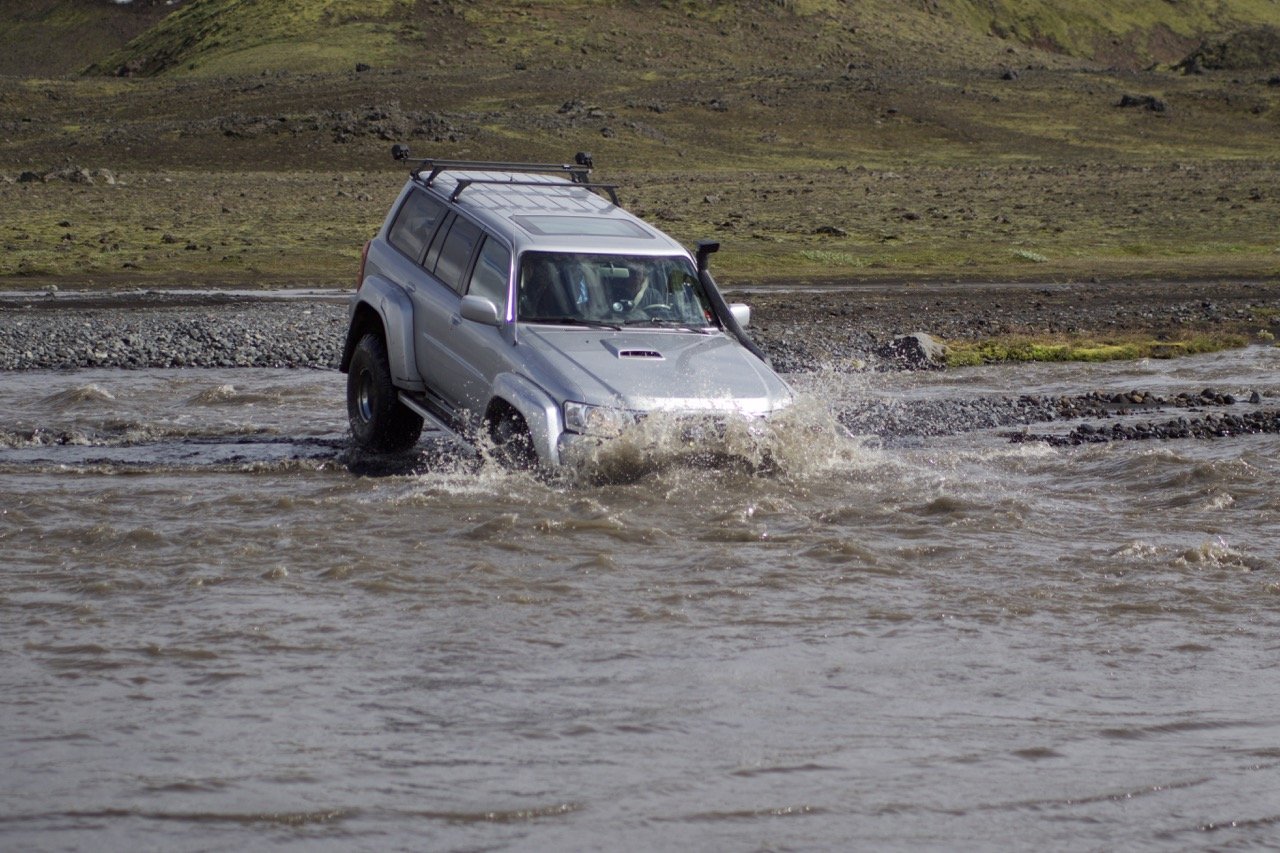
4-Day East Iceland Itinerary
Day 1: Höfn and Vatnajökull Glacier
An incredible glacier landscape in Vatnajökull National Park
Do a glacier hike in Vatnajökull Park
Once you’re in the region, venturing up onto the Vatnajökull Glacier is almost always my first recommended stop.
Tours leave from Höfn, but also from other areas around the south coast, such as farmsteads, Skaftafell Visitor’s Center, and a few other spots. The glacier tongue best for hiking is Falljökull (falling glacier), where a jagged cavalcade of ice near the top makes for a beautiful sight up close.
Visit Jökulsárlón Glacier Lagoon & Diamond Beach
After your glacier hike, jump back in your car and head toward the Jökulsárlón Glacier Lagoon and Diamond Beach. These two sights are among the most famous along Iceland’s ring road. The lagoon is an expanse of water dotted with floating icebergs that have broken off from the glacier tongue.
When they’re pulled out through a narrow channel to sea, the tides wash them up again on a black sand beach, where they sit and melt into natural sculptures.
This is the reason why the beach is now called “Diamond Beach”, since the icebergs line the shore and glint in the everchanging Icelandic light.
Relax in Höfn
After your time at Jökulsárlón, make the hour-long drive toward Höfn. In this region, you could continue to explore the fringes of Vatnajökull, with several outlet glaciers at the end of long, bumpy roads.
Otherwise, take it easy with a soak at the Hoffell Hot Tubs or Höfn swimming pool before dinner at one of the harbor restaurants in town, famed for their lobster.
Höfn has plenty of good accommodation options, and there are guesthouses dotted throughout the region along the fringes of the glacier.
Day 2: Into the East Fjords
A stunning landscape outside of Höfn
Take a scenic drive through the Stokksnes Peninsula and East Fjords
The East Fjords aren’t home to many must-see sights, but the region itself is incredibly beautiful. From Höfn, drive out to the Stokksnes Peninsula, where you can easily spend two hours exploring the black sand beach, the outskirts of the abandoned US radar station, and an unused movie set of a recreated Viking Village.
Then, take your time driving in the East Fjords themselves. Around every corner is another wonderful vista, with jagged mountains looming over the deep fjords, while waterfalls run down the sides of the mountains.
Road trip around East Iceland’s picturesque towns
Stop to poke around a few of the towns and you’ll turn up quirky museums and local artisan galleries. There’s Djúpivogur, a designated “slow travel” town, with a set of egg sculptures by the harbor and a local gallery that showcases sculptures made from animal bones, rocks, and wood.
Then, there’s blink-and-you-miss-it Breiðdalsvík with a budding brewery, and Stöðvarfjörður, home to the impressive Petra’s Stone Collection. Here, you can enjoy browsing the immense collections of stones, rocks, and minerals, all collected by the late Petra over a lifetime of living in the East Fjords.
As you continue, you’ll come into Fáskrúðsfjörður, which translates to “French Fjord”. It was here when long ago French fishermen would land after fishing offshore. There was even a French Hospital here to treat their injuries; today, it’s a small history museum that shows what life was like for the French who plied the waters of the fjord.
For a long detour, you could drive through the busy fishing towns of Reyðarfjörður and Eskifjörður on your way to Neskaupstaður, a remote town set in one of the most spectacular fjords and a nice place to stay a night.
Just as tempting is making the drive from Fáskrúðsfjörður directly to the spectacular Seyðisfjörður, widely regarded as one of the prettiest towns in Iceland. There are a handful of hotels and guesthouses here, and a campsite as well.
Day 3: Egilsstaðir and Lagarfljót Lake
The walkway out to the majestic Hengifoss Waterfall
Lagarfljót lake
Day three is a good time to explore the surroundings of Egilsstaðir. Drive to the southeast of town along the shores of Lagarfljót lake and keep your eyes peeled for the sea monster said to lurk in the deep waters, a distant relative of the Loch Ness Monster in Scotland.
On the southern bank of the lake is the Hallormsstaðaskógur National Forest, the largest forest in Iceland. Take a walk along the water for a relaxing morning before driving across to the northern side of the lake, where the epic Hengifoss Waterfall thunders down a cliff. This is the third tallest waterfall in the country.
Hike from Laugarfell Lodge
From here, continue southwest into the beginnings of the Highlands. Route 910 leads you to Laugarfell Lodge, from where you can embark on a 5-mile return hike (8km) around the Waterfall Circle, taking in some powerful waterfalls.
Soak in the Vök Baths
On your return to Egilsstaðir, rest your weary bones in the Vök Baths, a decadent hot spring on a lake just north of town.
Spend the night in Egilsstaðir, where you can enjoy a dinner at one of the town’s restaurants.
Day 4: Hiking in Borgarfjörður Eystri
Walk through Stuðlagil Canyon
On your final day in the region, get an early start to make the 1-hour drive out to Stuðlagil Canyon, where basalt columns emerge on both sides of the steely-blue water of the glacial river. It’s one of the most famous sights in the area.
After you’ve walked through the canyon and admired the basalt columns, make the journey back toward Egilsstaðir.
Enjoy spectacular scenery (and puffins) and hiking in Borgarfjörður Eystri
From Egilsstaðir, Route 94 leads you to the small town of Borgarfjörður Eystri. At the eastern end of the bay here is one of the best puffins viewing areas in Iceland, and well worth checking out if you’re visiting between April and mid-August. The spectacular surroundings in this region are also perfect for embarking on a remote hike.
From the puffin viewing area, a trail leads over to Brúnavík Beach, in the fjord to the east of town. The short but steep trail crosses east over the mountain and delivers you into the uninhabited fjord, where a crescent black sand beach lies.
From here, you can choose to return the way you came, or loop around another mountain pass to the southwest of the beach and back to town.
Hike to Stórurð
Another great hike in the area is the longer and more challenging one to Stórurð, with the trailhead beginning on Route 94 between Borgarfjörður Eystri and the Ring Road. Translating to “The Giant Boulders” in English, Stórurð is a remote area of fields dotted with a chaotic mess of boulders and small ponds, with jagged mountains rising in all directions. It’s about a 7.5-mile return hike from the trailhead.
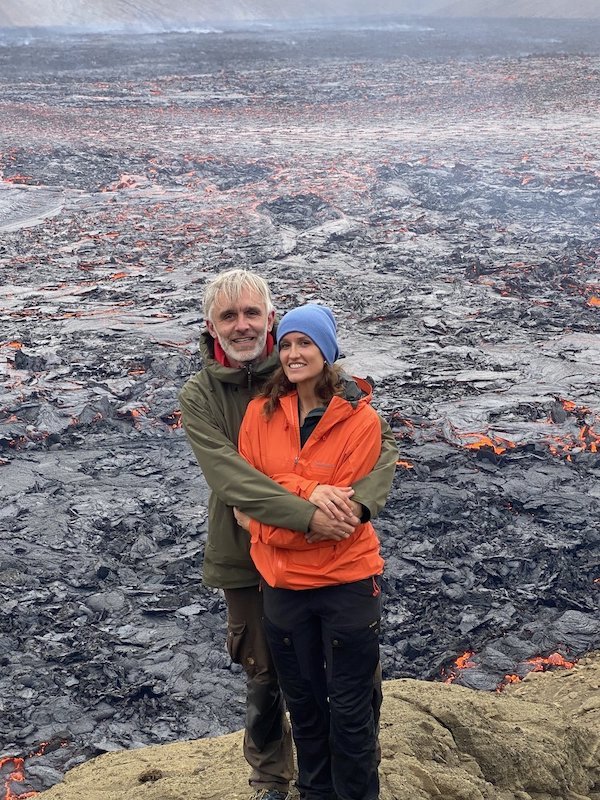

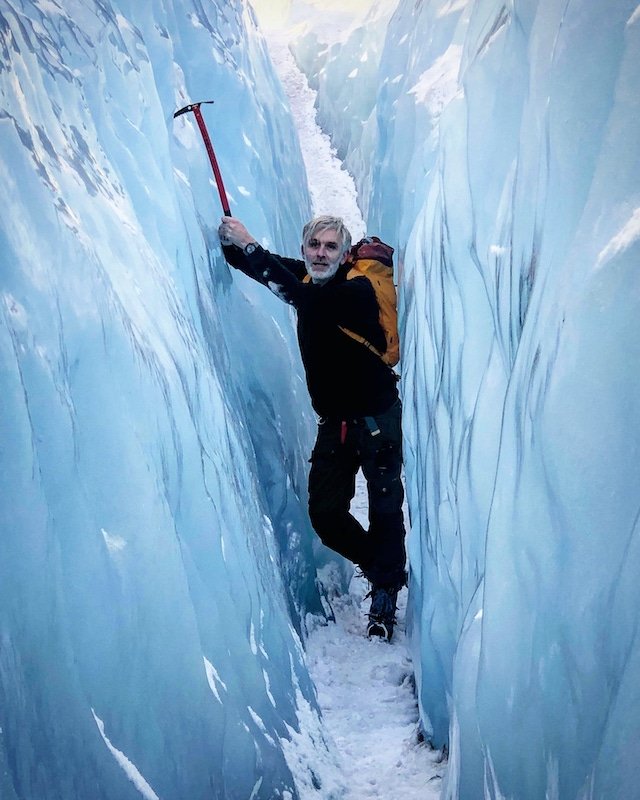


Connect with an Iceland expert!




